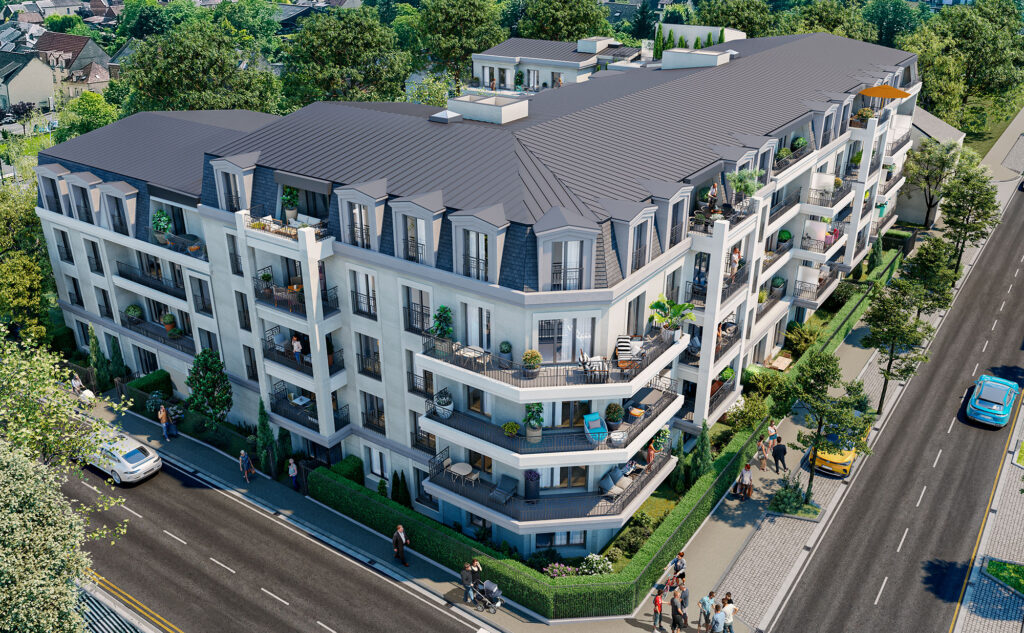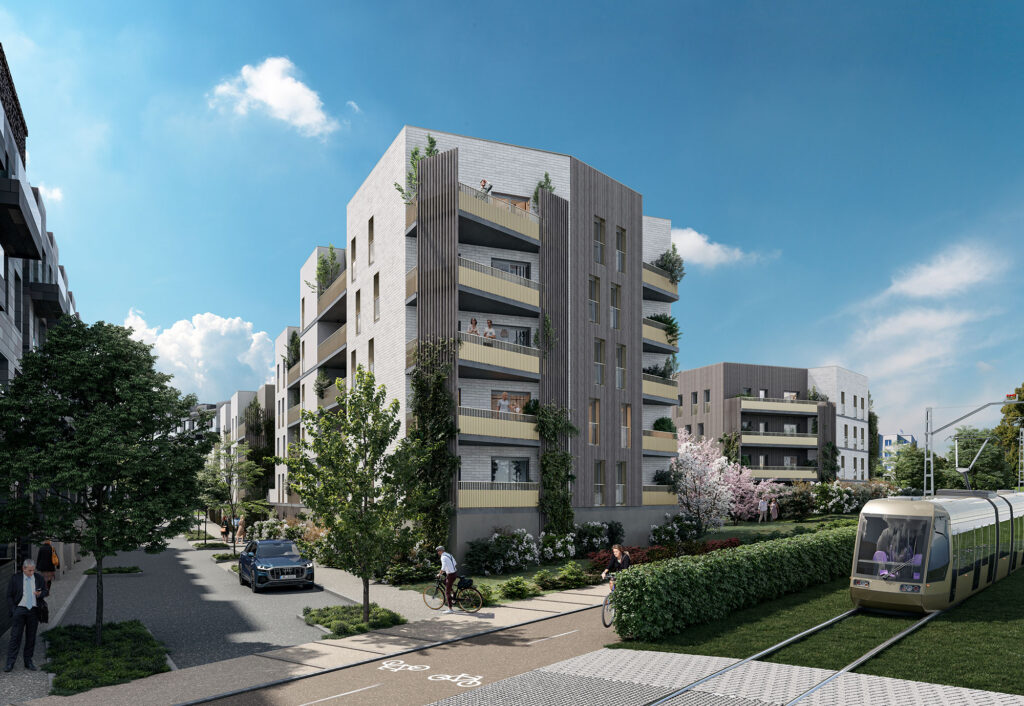3D modeling in real estate is a fast-growing sector, thanks to rapidly evolving technologies and high demand. These advances bring with them a host of new challenges for real estate developers, building experts and 3D graphic designers themselves. Improved collaboration, integration of new features, customer satisfaction - there are so many challenges to be met. How can we respond effectively to these new challenges and anticipate the future ? Find out in this article what's at stake with 3D modeling in real estate, and what developments are underway.
The challenges of creating 3D models
3D modeling in real estate is facing new challenges, whether to facilitate collaboration, create renderings more quickly or respect ethics.
Standardizing file formats
With growing demand in the 3D modeling market, data exchange is becoming a major issue, particularly in real estate. Indeed, when creating a 3D model, several players collaborate and work on the same model. However, 3D software uses hundreds of different native files. And yet, switching from one format to another exposes you to the risk of quality loss, wiping out all your efforts. Hence the importance of standardizing file formats.
Whereas just a few decades ago, collaboration was difficult due to different file formats, it is now possible to use and export standard files. This means that several graphic designers, architects or other professionals can work on the same format, despite using different software. This makes your collaborative work smoother and avoids time-consuming file conversion.
Among these standard formats are STEP and OBJ, which are easy to open in the most popular CAD programs.

Fast 3D model production
Computer graphics designers are faced with an injunction to create quickly, a new challenge for real estate 3D modeling. At a time when everything is urgent, it is imperative to create quickly, without compromising quality. Previously, a choice had to be made between realism and speed of execution. Nowadays, several techniques are available to reduce creation time.
High-performance tools make rendering faster and easier. Features such as Artificial Intelligence offer innovative solutions for rapidly creating perspectives. For example, AI can help texture or edit a building in 3D using written commands. Used by an experienced computer graphics designer, this tool shortens the production time of a 3D model.
Other techniques known to computer graphics designers enable you to produce a realistic model in a short space of time. These include optimizing the number of polygons, using UV mapping or adopting the stylization technique. The rendering remains of the highest quality and always meets the high expectations of customers and potential buyers, which is essential in a competitive market.
Ethics in 3D model creation
The opening up of 3D creations to the general public has raised questions about the confidentiality and ethics associated with the 3D renderings created. Virtual tours and real estate models are veritable anthills, disseminating sometimes sensitive information and collecting personal data. This is why ethics is a new challenge for 3D modeling in real estate, and why all players in the field need to take responsibility.
For example, 3D visualization platforms or 3D viewers need to put in place an effective system to secure platforms (firewalls, unique identifiers) and collect a minimum of personal data. As for real estate agencies, when creating a virtual tour from a property under their mandate, they must protect the privacy of the owner or former tenants. This means, for example, hiding family photos or other highly personal items.
This issue of confidentiality comes in response to the new trends emerging on the market, which require a significant amount of data exchange.
Future trends in 3D modeling
In addition to the issues surrounding 3D creation and modeling in real estate, new trends are emerging and taking their place in the market. In addition to the growing interest in Building Information Management (BIM), other technologies are emerging and shaping buyer interest.
Augmented reality, the way of the future
Well-known in the media and on historical sites for several years, augmented reality is now making its debut in the real estate sector. This technology consists of superimposing elements modeled in 3D onto reality, hence the term augmented reality. In concrete terms, by pointing your camera at a space or building, you discover digital elements superimposed on the landscape: visuals, texts and 3D images.
In the future, it would be conceivable to commonly use a mobile app to view properties in real time by pointing your smartphone camera at them. This woulddisplay information such as price, size, lot availability or virtual images. If this technology becomes more widespread over the next few years, property developers will be able to reach a wider target audience and provide access to information quickly and efficiently.
Virtual reality for a more immersive visit
Virtual reality technology involves creating an immersive digital environment, using a special headset. This experience goes beyond traditional virtual tours, offering total immersion in the location. While the world of video games and cinema has long since embraced this technology, the real estate industry is beginning to adopt it in its marketing approaches.
For the moment, this technology is not yet available in all homes. However, it is already present at real estate trade fairs, offering potential buyers and investors an out-of-the-ordinary visit. The development of this technology represents a major challenge for the sector, since it is estimated that as soon as VR headsets become more accessible to households, the demand for virtual reality real estate visits will increase.
The role of AI
Efficiency is one of the challenges of 3D modeling, hence the growing interest in Artificial Intelligence. In recent years, text-to-image software has become more powerful, enabling the creation of 3D objects. AI offers an excellent way for graphic designers toautomate their workflow. Artificial Intelligence enables repetitive tasks to be performed automatically or semi-automatically, such as configuring data or writing a prompt.
In other fields, AI has already reached a more advanced level, such as detecting problems and inconsistencies in car manufacturing. In the final analysis, it can make a project more efficient and optimize costs. All these technological advances are profoundly transforming the expectations of customers, whose consumption and communication habits are changing.
Currently more receptive to videos than a decade ago, potential customers will soon be adept at using virtual reality visits to choose their future home. For any real estate developer, it's important to anticipate and start integrating this emerging 3D modeling technology in order to remain innovative and relevant.

The future of 3D modeling in real estate construction
The development of 3D modeling technologies will also revolutionize real estate construction, whether through eco-design or Smart Cities.
Eco-design and 3D modeling
Reducing greenhouse gas emissions remains a major challenge for real estate construction. The building sector alone accounts for 21% of global greenhouse gas emissions. Eco-design is the answer to this problem, as it helps to reduce the costs associated with building construction and any expenses incurred by the property once completed.
During the construction phase, 3D modeling is an asset for reducing construction errors and defects. Thanks to its precision and realistic visualization, it enables teams to detect inconsistencies and correct them digitally before carrying them out on site. This early detection enables project managers to reduce construction costs.
Today, 3D modeling and BIM processes can be used to simulate a wide range of data, including energy consumption and the cost of changing materials. For example, when designing your property, you can simulate energy consumption as a function of a number of factors: building orientation, insulation materials, etc. The results of this simulation provide the keys to optimizing the building's energy consumption as much as possible. The results of this simulation provide the basis for decisions to optimize the building's energy consumption as much as possible, thereby reducing its long-term environmental impact. This is what we call low-carbon real estate.
Smart Cities and 3D modeling
3D modeling supports the development of Smart Cities. These cities are managed by connected intelligence. Already used for urban planning, modeling enables the realistic design of future outdoor spaces and new buildings for these futuristic cities. 3D renderings enable city officials to evaluate assets and approve new developments.
In addition to its role in design, 3D modeling also aids city management. Data relating to these Smart Cities can be grouped together in BIM software, giving all citizens access to the same level of information. What's more, 3D modeling helps to anticipate future needs through realistic data, simulations and visualizations.
The development of 3D modeling is opening up new perspectives in the real estate market, facilitating projects and enhancing buyers' experiences.
Integrate 3D modeling into your real estate projects.
CTA








